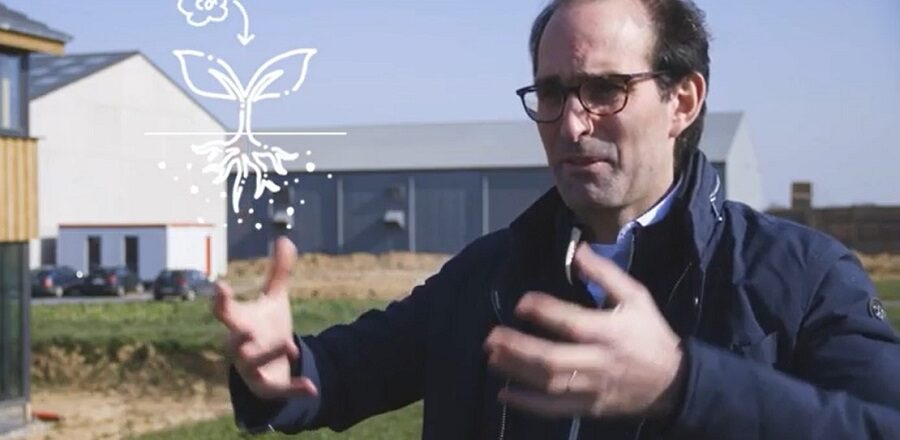
Farm to Fork, “all to be redone”
The criticism of the Farm to Fork increases. After the studies of USDA and JRC, another pitiless analysis of this strategy comes from the German agricultural sector. Now it’s clear: it’s all to be redone. Or almost.
The first criticism came from the USDA, the US Department of Agriculture. The European policies of Farm to Fork (F2F) do not achieve the objectives set (such as reducing climate-changing gases) and are the reason for solid imbalances in the agri-food markets, and consumer prices could go up. A harsh judgment, which came even before the European Union provided an analysis of the consequences of its agricultural and environmental policies choices.
But let’s proceed in order. It was the end of 2019 when the European Commission led by Ursula von der Leyen announced the Green New Deal, the green pact for Europe. A project designed to give a solid breakthrough for the fight against climate change.
European #farmtofork policies are not achieving their objectives and are causing major imbalances in the #agrofood market. Click To TweetThe F2F has an ambitious program, such as reaching 2030 by reducing by 55% the greenhouse gas emissions from human activities. These include agriculture, often accused of using too many fertilizers, too many agro pharmaceuticals, and now of attacking biodiversity. Not to mention farms, singled out among the largest producers of methane (cattle) or to exceed with nitrogen input on the fields (with wastewater). Partial truths, sometimes lies, but this is not the time to talk about it.
With agricultural policies in mind, the Green New Deal project was completed by the Farm to Fork. These, in summary, its key points: zero environmental impact, reduction of climate change, an increase of biodiversity, and then security and sustainable food for everyone. How to achieve these goals is soon said. 20% reduction in demand for meat, zero import of soya, 25% increase in organic farming, use of agro pharmaceutical (less than 50%), and chemical fertilizers (less than 20%) reduced to the minimum. The project is fascinating if you do not think about the practical consequences, but the USDA put everyone back on earth and rejected European policies.
Thinking about the practical consequences of the #farmtofork strategy was the #USDA, which did the maths in the pocket of #EuropeanPolicies, rejecting them. Click To TweetBut can we trust the judgment of American experts? Is there not the risk that partisan interests condition this critical analysis? So, with no impact assessment by the European Commission on the Farm to Fork, the German farmers aim to understand what to expect. The Grain Club, which brings together five German associations active in various agro-food sectors, appointed Christian Henning, Director of the Institute of Agricultural Economics at the University of Kiel, to scientifically analyze the Farm to Fork proposals to assess their practical consequences. The conclusions are as surprising as they are worrying.
Let’s start with farms. The expected result is a 20% reduction in beef production and a 6.3% reduction in milk production—inevitable effects on market prices. Beef will cost 58% more, pork will be 48% more expensive, and 36% more money to buy milk. The stability of the European trade balance will also change, as meat and milk will be imported from third countries, where prices will be lower, and the rules on reducing the environmental impact will be less rigid.
Reducing #farming by 20% means raising prices for the poorest. The cost of #redmeat will be 58% higher, #pork meat will be 48% more expensive and even buying #milk will cost 36% more. Click To TweetThe rise in prices will not regard just meat but will extend to crop production, albeit lesser. According to Christian Henning’s analysis, for cereals, the price increases will be over 12%, to reach 15% in the case of fruit and vegetables. This will result from lower production due to the strong growth of land left deliberately uncultivated (set-aside) or to ecological destination (unproductive) — a transformation of 11 million hectares.
With such a Farm to Fork, the result would be a sharp reduction in the Union’s agri-food exports, while at the same time imports of meat, cereals, protein crops, and oilseeds would increase. A situation in stark contrast to the strategic evidence that agro-food productions demonstrated during the health emergency from Covid-19.
With the #FarmtoFork there would be a reduction in #food exports from the #EU, while imports of #meat, #cereals, #protein and #oilseeds would increase. Click To TweetIt may be argued that at the same time, eating habits could be changed, in particular discouraging the consumption of meat. This seems to tend to the many fancies on the alleged danger of animal origin products and the attempt to introduce traffic lights labels. But the analyses of Christian Henning and the German Grain Club state that the demand for milk and meat is inelastic, challenging to compress.
So, the Farm to Fork application will result in an economic disaster, especially for the poorer consumers. We already have to deal with the “ecological transition” costs, which will absorb over EUR 42 billion from public funds. But the most crucial part would be paid by consumers with an estimated value of EUR 70 billion, EUR 157 per European citizen.
A heavy sacrifice, but justified, it will be said, by the environmental benefits. But they seem modest. The 25% increase in organic farming, says the study commissioned by Grain Club, would allow a modest reduction in nitrogen load in the soil. But transformations in the use of fields must be taken into account to assess the Farm to Fork strategy’s impact properly. The result is surprising. Carbon sequestration in the soil would increase by just 5 million tons of CO2 equivalent. It’s a trifle.The consequence of the different destinations of forest areas and interventions on landscape and biodiversity. Without counting the effects on agriculture in third countries, incentives to increase meat production to meet European needs after reducing domestic production.
The conclusions of the study signed by Christian Henning are highly critical. The Farm to Fork strategy, which merely dictates reductions in production, proves incapable of meeting the objectives of the Green New Deal. A severe judgment coincides with that already expressed by USDA and the European agricultural and agro-livestock sector, highlighting the paradoxes.
According to the #GrainClub report, the #FarmtoFork strategy is ineffective in reducing #ClimateChange. Click To TweetIn particular, the Farm to Fork strategy is ineffective in reducing climate change. The European Commission even reached the same conclusions, which disseminated the results of research entrusted to the JRC (the European Research Centre). These show that, in addition to soaring agri-food prices, there would be no substantial environmental benefits. The improvement achieved in Europe would be wiped out by the simultaneous increase in emissions from third countries.
Therefore, the environmental problem must be faced with a global vision, without limiting it to the European Union alone. Since this condition is challenging to achieve, action should be taken on other fronts. Among these are the technological progress, functional to improve the sustainability of agro-food production. At the same time, trade policies would be needed to avert the danger of a shift in output from the EU to third countries. Finally, a different land-use approach, accompanied by introducing “carbon quotas” in agriculture, is essential, as has already been done in other sectors. Quoting the line of a great cyclist of the last century, you could say, “it’s all wrong, it’s all to be redone”.





